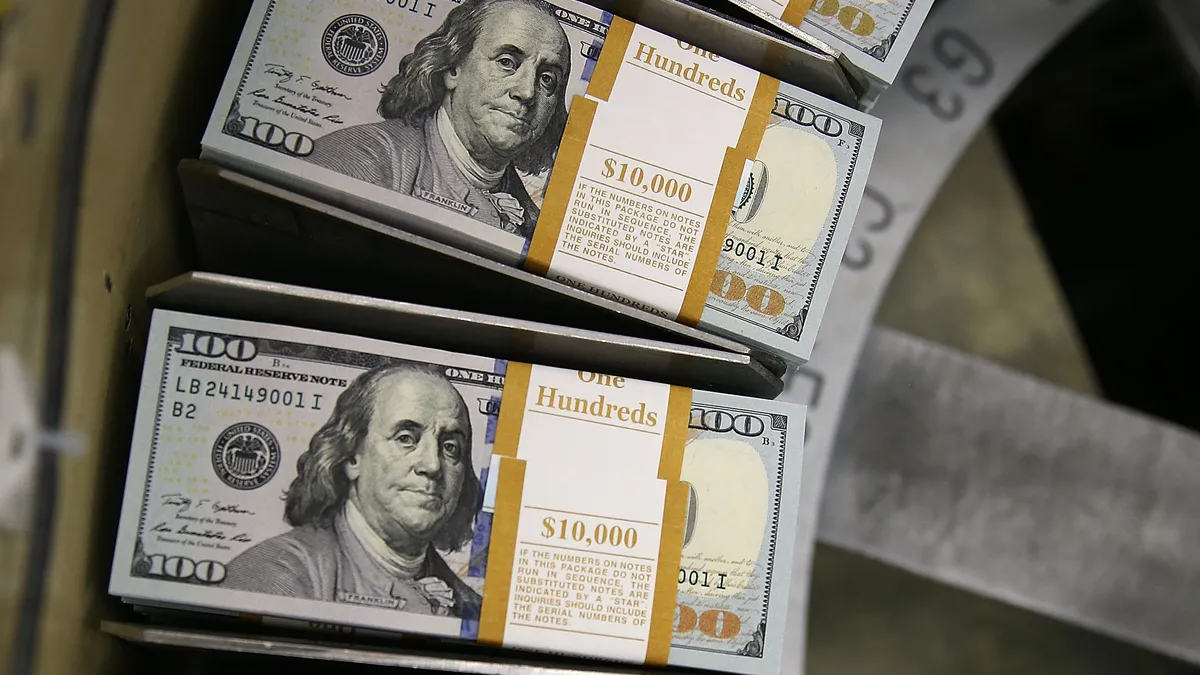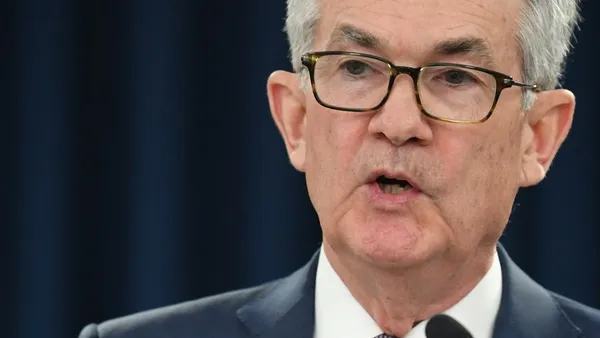Dive Brief:
- Inflation poses “upside” risks to the economy while exceeding Federal Reserve expectations, Fed Vice Chair Richard Clarida said Monday, predicting that a decline in unemployment will prompt the central bank to increase the benchmark interest rate by the end of 2022.
- PCE “inflation so far this year represents, to me, much more than a ‘moderate’ overshoot of our 2% long-run inflation objective,” Clarida said at a Brookings Institution webinar. Most central bank policy makers “believe that the risks to the outlook for inflation are to the upside.” PCE refers to consumer expenditures, one of the main price gauges the Fed tracks.
- The U.S. economy will likely reach the Fed goal of “maximum employment” by the end of next year, Clarida said, forecasting that by then unemployment will fall to 3.8% from 4.6% in October and other “necessary conditions” will be in place for an increase in the main interest rate from a record low.
Dive Insight:
An inflationary surge has prompted many CFOs to raise prices, cut costs, negotiate with suppliers, diversify their supply chains and rely more heavily on advanced technology such as data analytics, CFOs and other top executives told analysts last month during quarterly earnings calls.
Fed Chair Jerome Powell and other central bank officials have acknowledged in recent months that they underestimated the duration and degree of inflation, citing supply chain bottlenecks in the quickly rebounding economy as a chief cause of higher prices.
“We're very, very straightforward about it,” Powell told a Nov. 4 press conference after policy makers decided to begin tapering $120 billion in monthly bond purchases while holding the federal funds rate at a record low. “Inflation has come in higher than expected and bottlenecks have been more persistent and more prevalent.”
Inflation will likely slow in coming months as snarled supply chains clear up, Powell said. Still, the risk outlook “appears to be skewed toward higher inflation, so we need to be in a position to act in case it becomes necessary to do so or appropriate to do so, and we think we will be.”
Inflation for months has flared well above the Fed’s 2% target. The consumer price index rose in September at a 5.4% annual rate — the same rate as in June and July, which was the fastest pace in 13 years, the Labor Department said this month.
The central bank’s preferred measure of price gains — the core personal consumption expenditures price index — rose 3.6% in September, according to the Labor Department.
Accelerating inflation has become a prickly partisan issue in Congress and at the state level.
“Washington Democrats have super-charged inflation,” Senate Minority Leader Mitch McConnell, R-KY, said on Nov. 3, a day after Virginia voters elected Republican businessman Glenn Youngkin as governor.
“Democrats should listen to the voters, drop their reckless tax and spending spree and stop trying to ram through a socialist transformation that the American people never asked for,” McConnell said in remarks on the Senate floor.
Two days later the House passed a $1 trillion public works bill. “According to the economists, this is going to be — ease inflationary pressure — not increase it, ease inflationary pressures by lowering costs for working families,” President Joe Biden said after the vote.
Democrats are now seeking consensus behind a $2 trillion package of spending to combat climate change and improve healthcare and education.
“The bill our colleagues are writing behind closed doors is terrible from top to bottom — more debt, more taxes, more inflation,” McConnell said.















